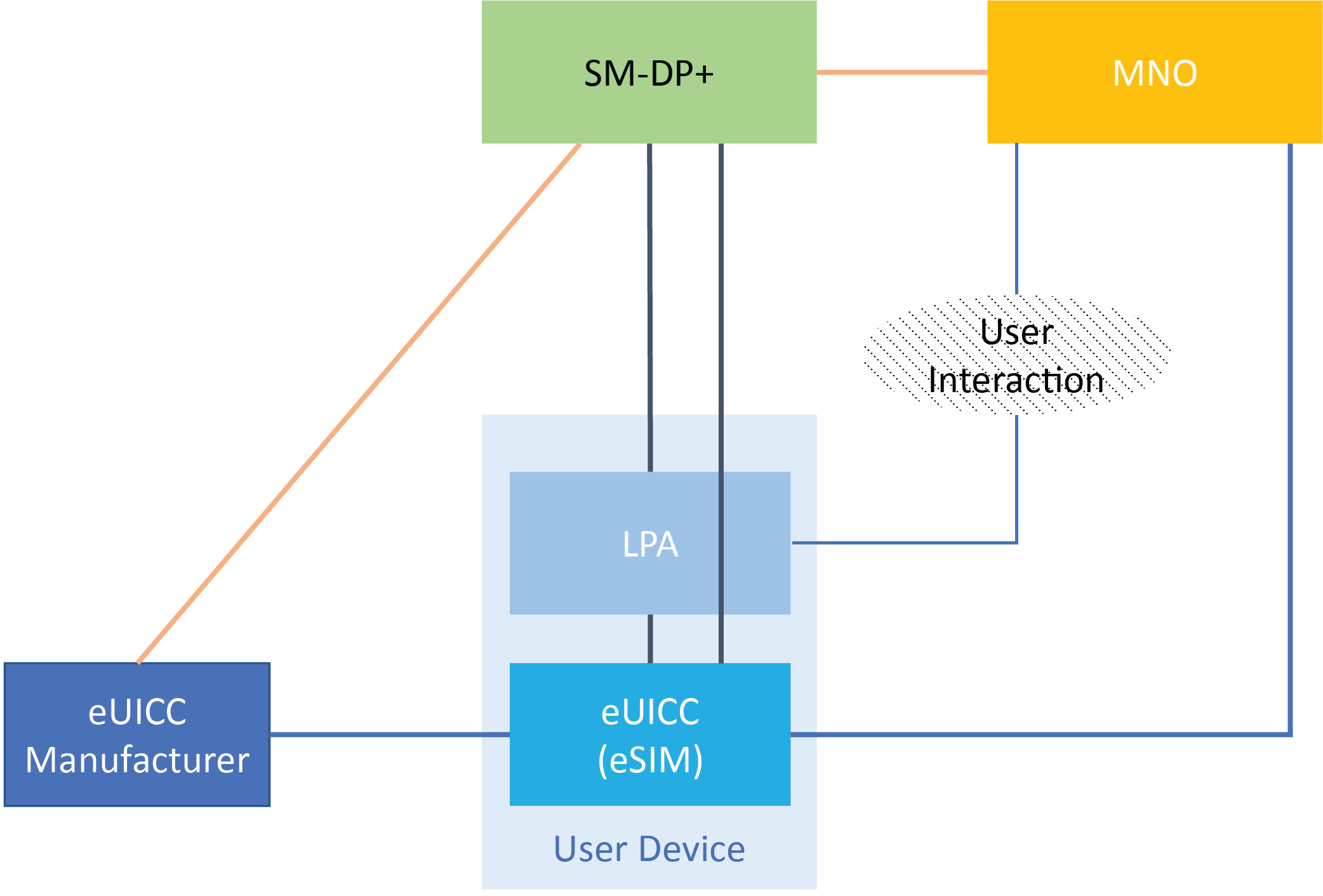Fueling Momentum with Secure
IoT Connectivity
With the emergence of global full mobile virtual network operators (MVNO), the challenges of working with a local or roaming carrier were resolved. A full MVNO manages and maintains its own core network elements and infrastructure, providing its IoT customers with complete control over all network services and offerings. The MVNO usually has service agreements with MNOs for use of their radio access network and therefore can easily provide access to several local networks to ensure continuous connectivity for devices wherever they are located. The MVNO can also have global data centers to reduce latency.
Transitioning from SIM to eSIM
The GSMA M2M architecture can be seen in Figure 1on the previous page. It uses an SM-DP (Subscription Manager - Data Preparation) and SM-SR (Subscription Manager - Secure Routing) to provision and remotely manage carrier profiles.The SM-DP acts on behalf of the MNO. It creates and stores the MNO profile for the eSIM based on information received from the MNO and eSIM manufacturer. It is also responsible for installing the profile on the eSIM through the SM-SR. The SM-DP also manages profile enabling and deletion requests from the eSIM through the SM-SR.
The SM-SR is responsible for establishing a secure and authenticated transport channel to the eSIM to manage the eUICC platform. Only one SM-SR can be associated with an eSIM at any point in time. It loads, enables, disables, and deletes profiles on the eSIM according to the MNO’s policy rules

Figure 2: Consumer eSIM Standard architecture
The SM-SR and SM-DP are usually run by the wireless carriers. This means that the customer needs to collaborate with wireless carriers to integrate connectivity into their product. When the
customer decides to onboard an additional wireless carrier, all parties must agree, and the new carrier’s infrastructure needs to be integrated with the eSIM platform. This can imply either
connecting the serving SM-SR to the second carrier’s SM-DP or performing an SM-SR swap to the second carrier’s SM-SR and SM-DP. The current service carrier needs to initiate the migration to the
next carrier. This can take months and costs tens of thousands of dollars. In addition, the customer doesn’t have control over the management of profiles or the flexibility to switch between
multiple profiles.
A simpler and more cost-effective way to overcome the M2M eSIM Standard limitations is by adopting the successful Consumer eSIM Standard into the M2M world. The Consumer eSIM Standard utilizes SM-DP+ (Subscription Manager Data Preparation +) for profile downloads (Figure 2, above). It carries out the functions of



















